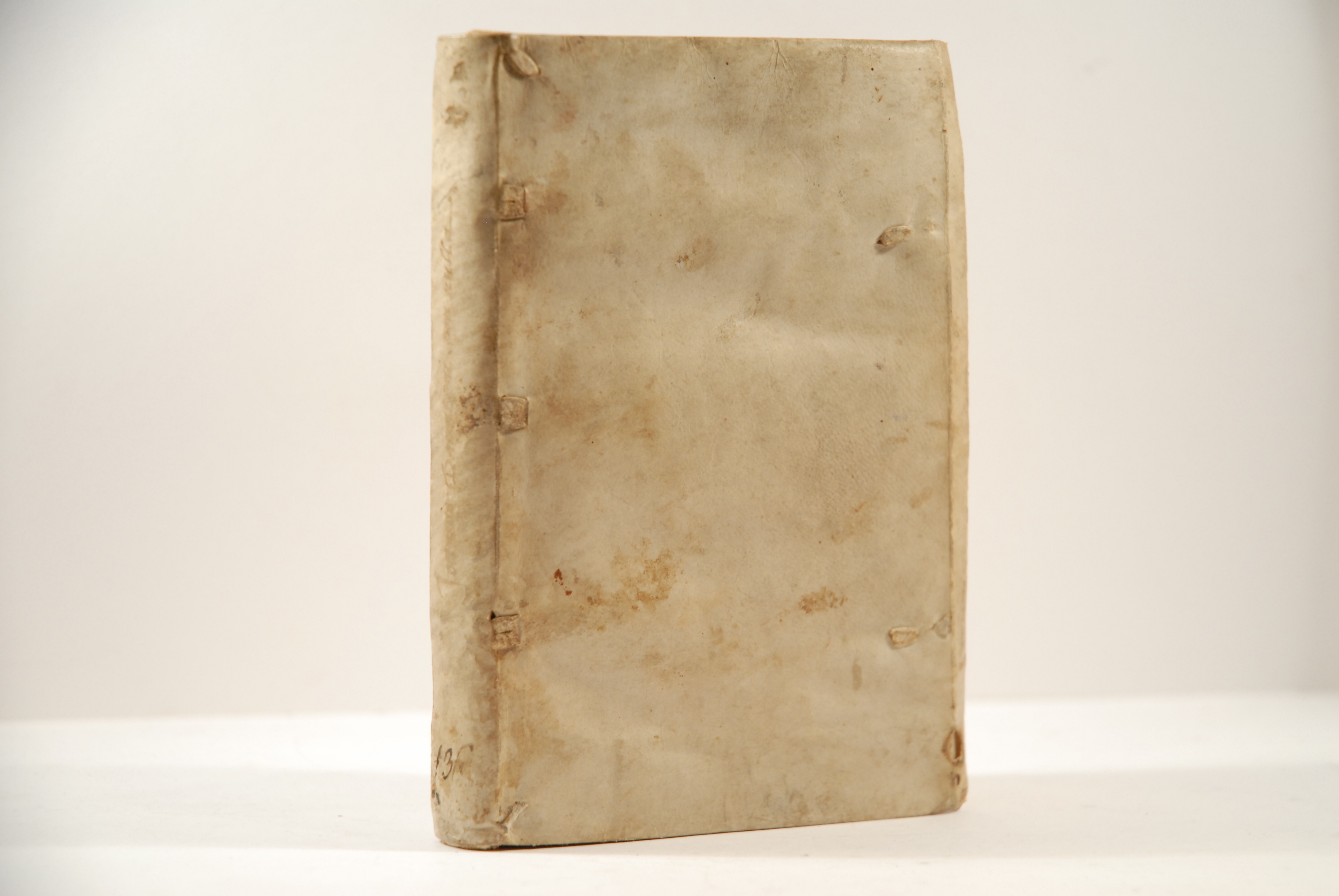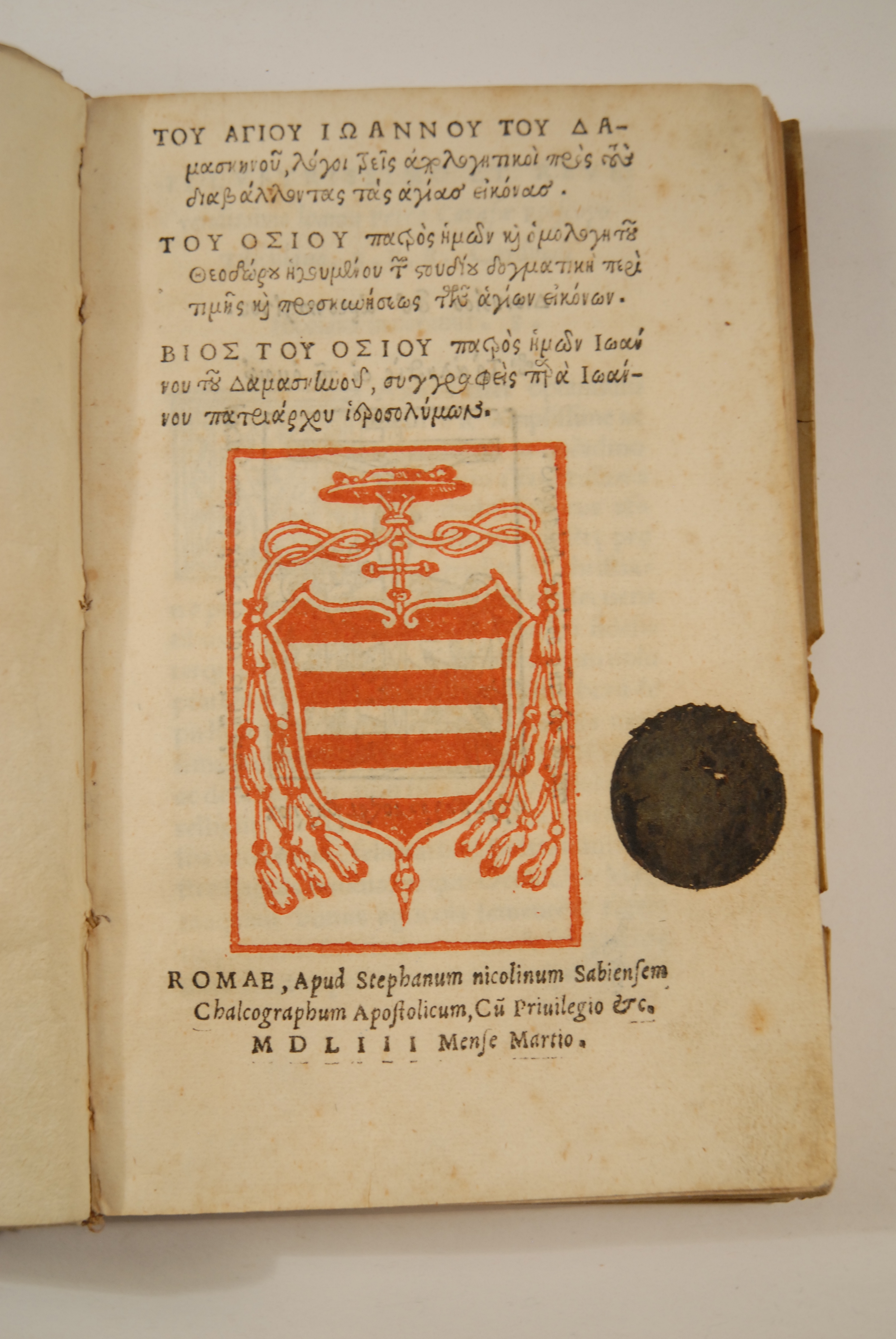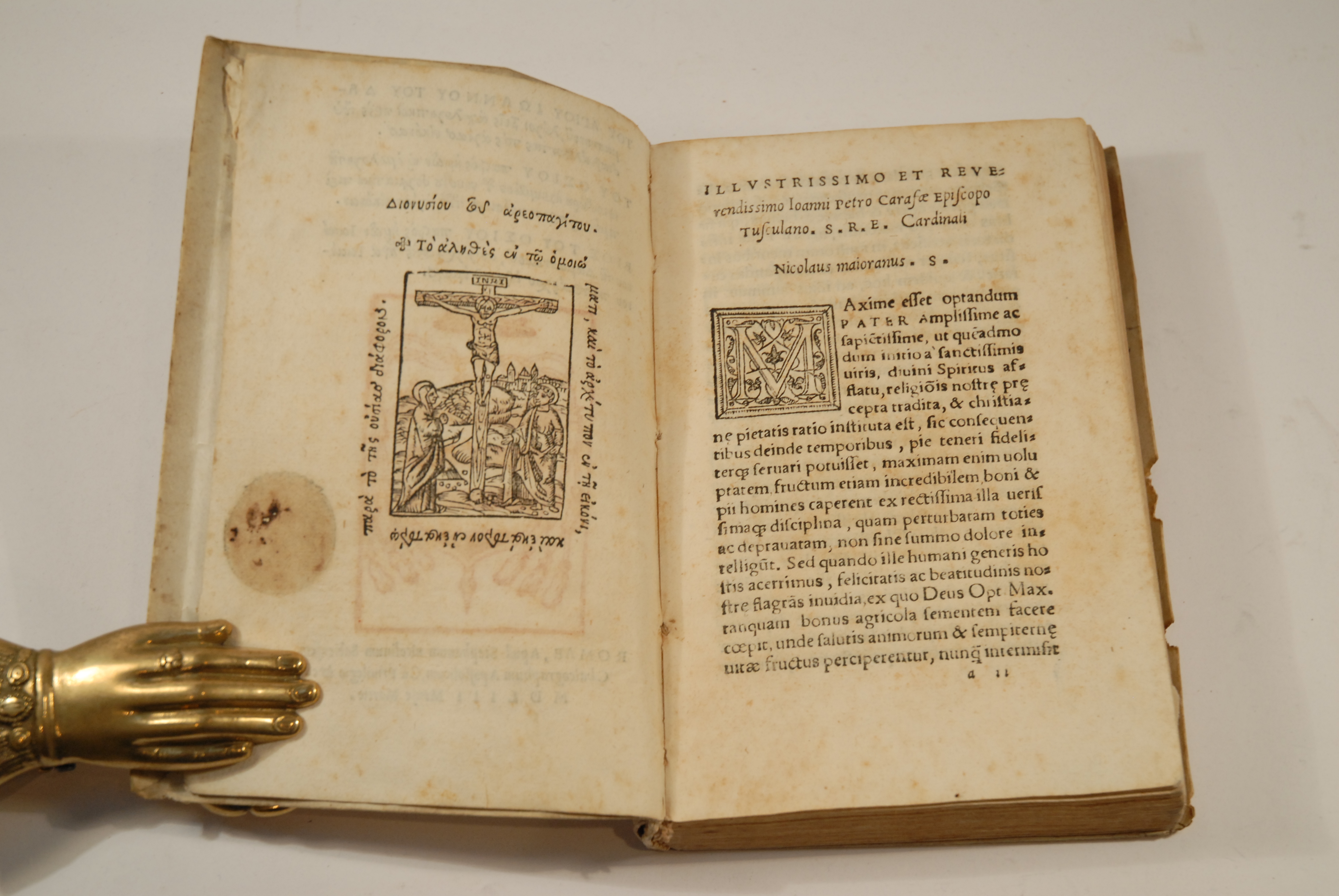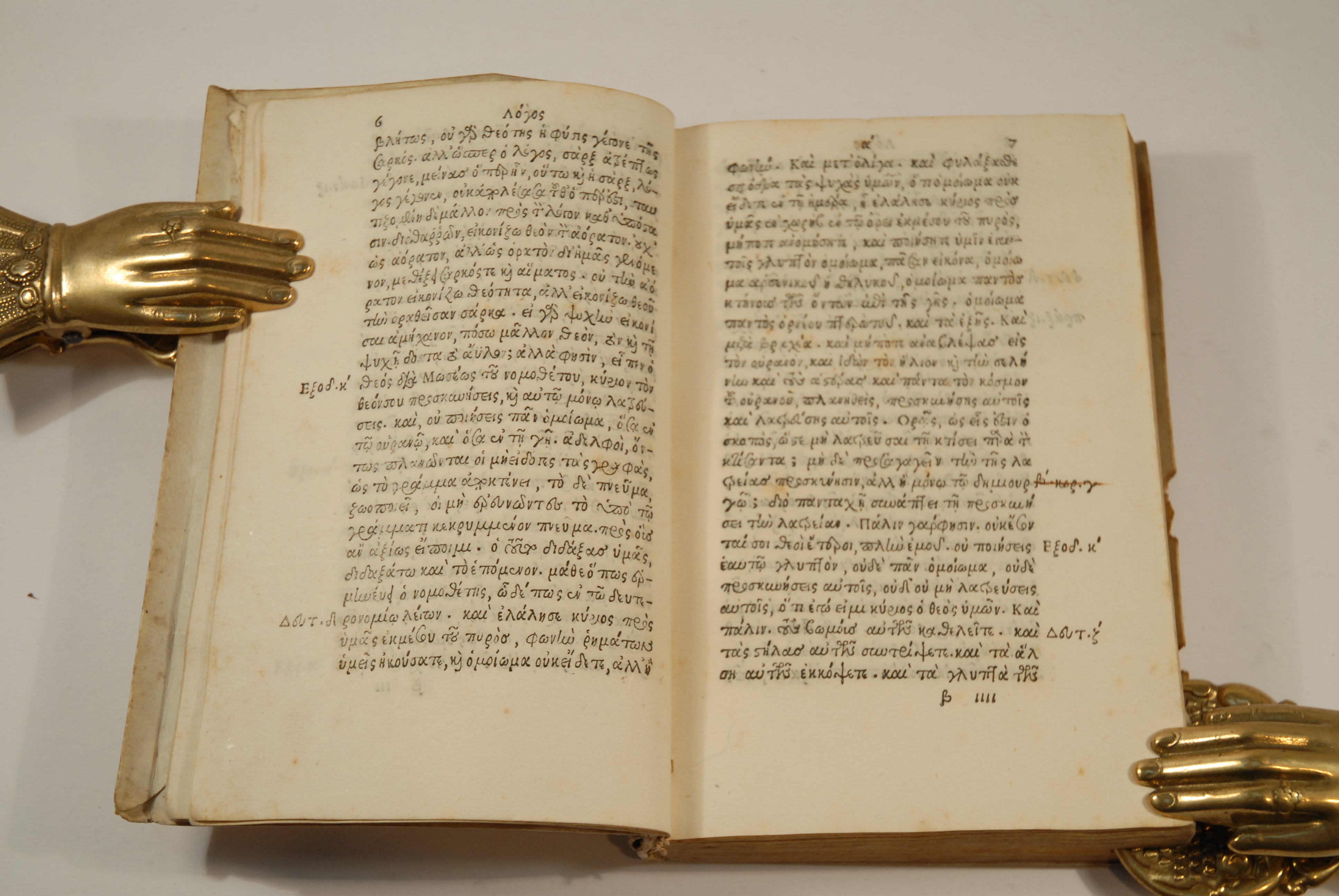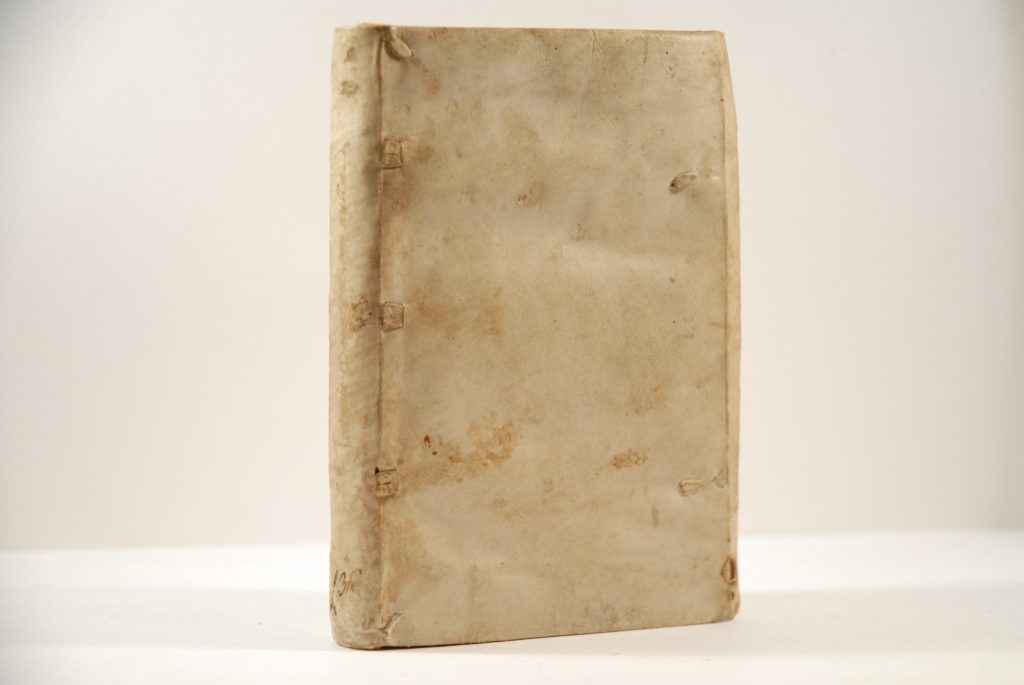JOHN OF DAMASCUS
ART HISTORY FIRST EDITION
Logoi treis apolog tikoi pros tous diaballontas tas agias eikonas. [Apology Against Those who Decry Holy Images.]
Rome, apud Stephanum Nicolinum Sabiensem, [1553]£8,500.00
EDITIO PRINCEPS. 8vo. ff. 142 unnumbered, – 8. Greek letter, in red and black, occasional Roman. Attractive woodcut coat of arms of Cardinal Pietro Carafa in red and ¼ page woodcut of Crucifixion to t-p recto and verso respectively, decorated initial to preface, headpieces throughout. General light yellowing, light foxing to outer margins and heavier to preface, skilful repair to upper outer corner to two ll. not affecting text. A very good, crisp, well-margined copy in contemporary limp vellum, yapp edges, lacking ties, old stain to lower cover. Modern label to front pastedown, ancient illegible stamp to t-p, early ms title and shelfmark to spine.
A very good, crisp, well-margined copy of the editio princeps of John of Damascus’s ‘Apology’ (c. 730), edited by the humanist Nicolaus Majoranus. Born in Syria, then under Muslim rule, John of Damascus (c.675-c.749) had a Christian education imbued with Hellenic influences, and became a monk. His ‘Apology’ played a fundamental role in debates on the justification of the use of sacred images within the Eastern Orthodox Church. The first attack against religious images, seen as impious representations of the ineffable nature of God, was launched by the Byzantine Emperor Leo III in 730. The period of iconoclasm that followed, during which all sorts of spiritual art and artefacts were destroyed and their worshippers prosecuted, continued almost uninterrupted until the reign of Empress Theodora in the early C8. The Second Council of Nicaea in 787 temporarily reinstated the veneration of images; the ‘Apology’ provided an important theoretical foundation. The work argued against the iconoclasts that Christians were allowed to paint images of Christ, saints and biblical figures as a profession of faith, and that such icons could be venerated and honoured (though not worshipped). A major question was the nature of ‘imitation’. On the one hand, iconoclasts declared that images were imperfect ‘copies’ of the perfect, transcendent and ineffable reality of God. On the other hand, the ‘Apology’ argued that artists were guided by the divine hand; they expressed their maker’s closeness to God and the latter’s true, divine and human ‘likeness’ as it had manifested itself with the Incarnation.
Stefano Nicolini moved with his family from Sabbio (Brescia) to Venice in the 1520s. He showed an immediate interest in the printing of Greek texts, from major literary and theological authors to beginners’ manuals to write, read, and speak the language. Between 1529 and 1532, he was in Verona where he printed works by the Greek Church Fathers for the bishop Gian Matteo Giberti. In Rome he worked as ‘Stampatore Apostolico con Privilegio’, as noted in this copy under the arms of Cardinal Carafa. Saved ‘from the darkness of oblivion’, in the words of the editor Nicolaus Majoranus, this edition engaged with contemporary debates on Protestant iconoclasm at the Council of Trent, of which Carafa was a member. In the dedicatory preface, Majoranus hoped that the ‘Apology’ would benefit the Council of Trent as it had that in Nicaea.
Harvard, Brigham Young, and Pennsylvania copies only recorded in the US.BM STC It. p. 359; Graesse III, 464; USTC 836453. Not in Dibdin or Légrand.In stock


